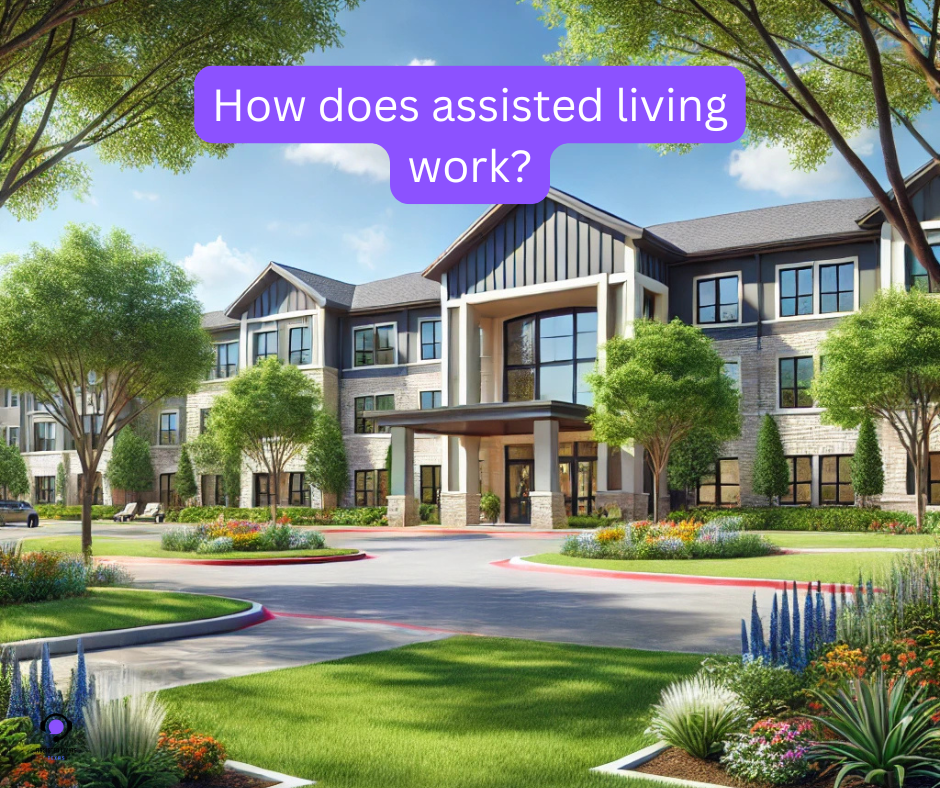
How Does Assisted Living Work? An In-Depth Guide
In the search for the best living arrangements for elderly loved ones, assisted living often becomes a prime consideration. However, understanding how assisted living works and whether it is the right choice can be complex. This article aims to provide a comprehensive look at assisted living, what it entails, and how it functions to support older adults in their daily lives.
Ready to explore assisted living options?
Contact us today at info@livingassistedtexas.com or call 713.960.3501 for personalized assistance and expert guidance.
What Is Assisted Living?
Assisted living is a type of long-term care option designed for older adults who need help with activities of daily living (ADLs) such as bathing, dressing, meal preparation, and medication management. It bridges the gap between independent living and the more intensive care offered in nursing homes. Residents in assisted living communities maintain a level of independence while receiving the support they need to manage daily routines.
Core Features of Assisted Living Facilities
Assisted living facilities typically offer a blend of private and shared living spaces with access to various amenities. Here are some of the core features:
- Personalized Care Plans
- Residents receive tailored care plans based on their specific needs. These plans are regularly updated to adapt to any changes in health or personal preferences.
- 24/7 On-Site Staff
- Professional caregivers are available around the clock to assist residents with their daily needs, ensuring safety and well-being.
- Medication Management
- Trained staff members oversee medication schedules to ensure that residents take their medications as prescribed, reducing the risk of missed doses or medication errors.
- Meals and Nutrition
- Assisted living facilities provide nutritious meals and accommodate dietary restrictions. Many communities offer communal dining options that foster social interaction among residents.
- Recreational and Social Activities
- To enhance the quality of life, most facilities organize events, group activities, and excursions that keep residents physically active and socially engaged.
- Housekeeping and Maintenance
- Housekeeping, laundry services, and general maintenance are often included, enabling residents to live in a clean and well-maintained environment.
How Does Assisted Living Differ from Other Care Options?
Understanding the distinctions between assisted living and other types of elder care is crucial when making a decision:
- Independent Living: While both independent and assisted living offer a community-based setting, independent living is for those who do not require assistance with ADLs.
- Nursing Homes: Nursing homes cater to individuals with more extensive medical needs who require round-the-clock medical supervision.
- Home Care Services: Home care allows seniors to stay in their own homes while receiving care, but it may lack the comprehensive community experience that assisted living offers.
Ready to explore assisted living options?
Contact us today at info@livingassistedtexas.com or call 713.960.3501 for personalized assistance and expert guidance.
Benefits of Assisted Living
Opting for assisted living can come with a host of benefits for both residents and their families:
- Enhanced Safety and Security: The presence of trained staff and emergency response systems ensures residents’ safety, particularly valuable for those at risk of falls or other incidents.
- Relief for Family Caregivers: Families can rest assured that their loved ones are well cared for, reducing the physical and emotional burden of caregiving.
- Increased Social Opportunities: Group activities and communal spaces provide seniors with more opportunities for socialization, which is crucial for maintaining mental and emotional health.
- Access to Wellness Programs: Many facilities offer wellness programs, fitness classes, and mental health support, promoting a holistic approach to senior care.
Steps for Transitioning to Assisted Living
The transition to assisted living can be an emotional and logistical challenge. Here is a step-by-step guide to help make the process smoother:
- Assess Care Needs: Start by determining what level of assistance your loved one needs. Consider ADLs and any medical or cognitive challenges.
- Research and Visit Facilities: Look for facilities with good reputations, positive reviews, and high safety ratings. Schedule visits to get a sense of the environment and services offered.
- Review Costs and Budget: Understand the financial implications. Assisted living costs vary widely depending on location and amenities, so comparing pricing is essential.
- Discuss the Move with Loved Ones: Engage in open and honest conversations with your loved one. Their comfort and willingness to participate in the decision are important.
- Plan the Move: Once a facility is chosen, make a checklist of necessary belongings and documents to ease the moving process.
Financial Aspects of Assisted Living
The cost of assisted living can be significant, and it is essential to understand the financial options available:
- Private Funds: Many residents use savings, pensions, or proceeds from the sale of a home to cover costs.
- Long-Term Care Insurance: This type of insurance may help offset expenses if the policy includes coverage for assisted living.
- Medicaid and Veterans Benefits: In some states, Medicaid may cover part of the cost. Additionally, veterans and their spouses may qualify for assistance through programs like Aid and Attendance.
- Bridge Loans and Financing: Families may consider short-term bridge loans to cover costs while other financial assets are liquidated.
Common Questions About Assisted Living
1. Can a resident’s needs be met as they change over time?
Yes, most assisted living facilities have the flexibility to adapt care plans as a resident’s needs evolve. This may include increased assistance or a transition to more comprehensive care options.
2. What if a resident runs out of funds?
Some facilities offer financial assistance programs or accept Medicaid, but this varies. It’s crucial to discuss payment options and future financial planning with the chosen facility.
3. Can couples stay together in assisted living?
Many assisted living communities offer shared living arrangements for couples, ensuring they can continue to live together even if their care needs differ.
Ready to explore assisted living options?
Contact us today at info@livingassistedtexas.com or call 713.960.3501 for personalized assistance and expert guidance.
Final Thoughts
Assisted living is a dynamic and supportive environment that offers older adults the assistance they need while allowing them to maintain a sense of independence and community. By understanding how assisted living works, families can make informed decisions and ensure their loved ones receive the best possible care. Taking time to research, visit facilities, and weigh options will lead to a smoother transition and a better quality of life for everyone involved.
- assisted living wichita falls tx
- Assisted Living Huntsville Tx
- Assisted Living Kilgore Tx
- Assisted Living Mesquite Tx
- `Assisted Living Gilmer TX

Comments